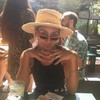THE BEGINNING OF TIME: Dialling Into The 90’s
From ‘93: Punching the Light" by Simon Burstall published by Damiani books (2019)
From ‘93: Punching the Light" by Simon Burstall published by Damiani books (2019)
Flyers for parties in the 90's (From SydneyRaveHistory.com)
From ‘93: Punching the Light" by Simon Burstall published by Damiani books (2019)
From ‘93: Punching the Light" by Simon Burstall published by Damiani books (2019)
From ‘93: Punching the Light" by Simon Burstall published by Damiani books (2019)
From ‘93: Punching the Light" by Simon Burstall published by Damiani books (2019)
From ‘93: Punching the Light" by Simon Burstall published by Damiani books (2019)
The End? Or Back To The Start?As we move into the 2020’s, post-pandemic, things are looking pretty bleak, and though lockout laws were lifted in January of 2020 in an effort to rejuvenate Sydney's nightlife, the trickle down effect from the loss of those 6 years has been telling for the music community.“A lot of spaces that could be used are now close to property development. There are so many apartments now so close to the city. It's hard with amplified music,” said Ford.
From ‘93: Punching the Light" by Simon Burstall published by Damiani books (2019)
From ‘93: Punching the Light" by Simon Burstall published by Damiani books (2019)
Follow Julie Fenwick on Twitter and Instagram.Read more from VICE Australia.
